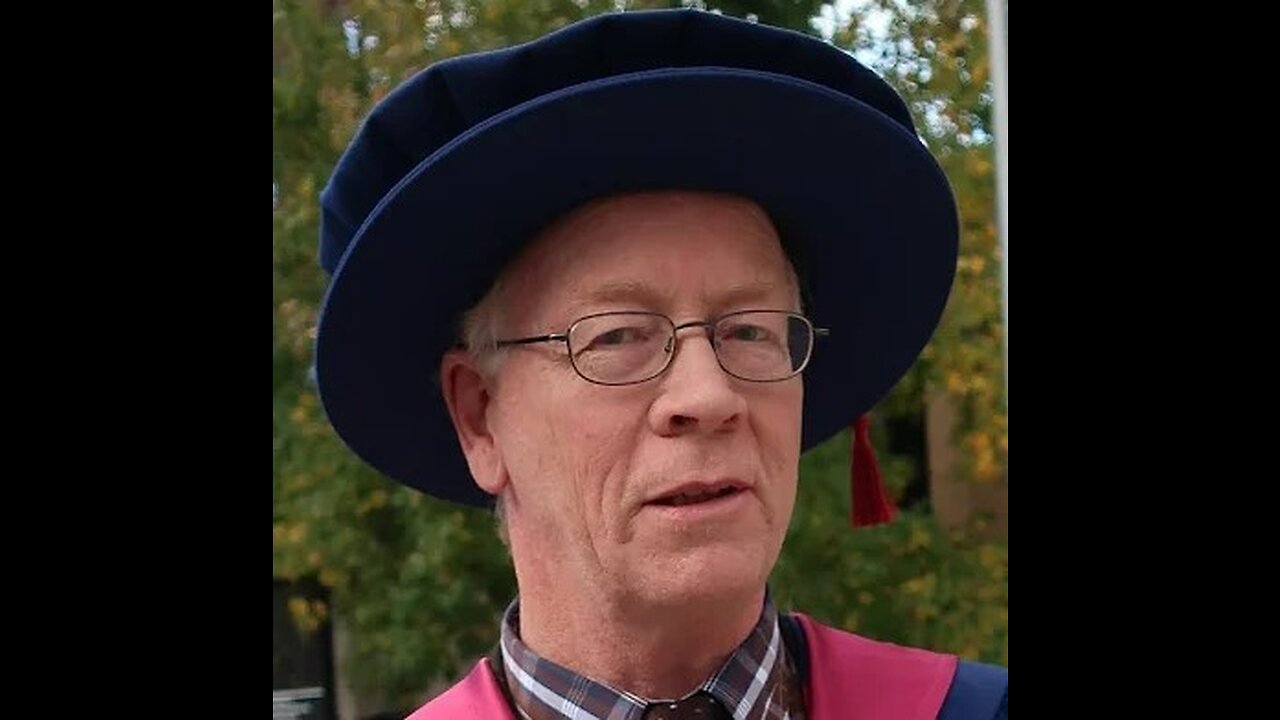Premium Only Content

CLIMATE SCIENCE 2 - There is No 'Extra Warming' to Explain
This the second in my Climate Science series debunking the greenhouse effect.
Climate Science 1 revealed that our atmosphere is not like a greenhouse; instead it's the exact opposite - it's capable of expansion and convection.
Here we explore the science and the climate cycles which the IPCC forgot to mention, and how they are totally controlling all current climate change.
We find that there actually is no 'extra' warming that we need to invoke a supposed 'greenhouse effect' from CO2 or other 'greenhouse gases' to fill.
Correction to CO2 forcing at 9:42 it is 0.01W/m2 not 0.1W/m2.
References;
Shaviv, N. J. (2003). The spiral structure of the Milky Way, cosmic rays, and ice age epochs on Earth. New Astronomy, 8(1), 39-77.
Cederlöf, M. (2014). Using seasonal variations to estimate earth's response to radiative forcing.
Shaviv, N. J. (2003). The spiral structure of the Milky Way, cosmic rays, and ice age epochs on Earth. New Astronomy, 8(1), 39-77.
65 million years of climate change (WIKI Commons)
5 million years of climate change (WIKI Commons)
Loehle, C. (2007). A 2000-year global temperature reconstruction based on non-treering proxies. Energy & Environment, 18(7), 1049-1058.
Usoskin, I. G., Solanki, S., & Kovaltsov, G. (2007). Grand minima and maxima of solar activity: new observational constraints. Astronomy & Astrophysics, 471(1), 301-309.
Steinhilber, F., Abreu, J. A., Beer, J., Brunner, I., Christl, M., Fischer, H., . . . McCracken, K. G. (2012). 9,400 years of cosmic radiation and solar activity from ice cores and tree rings. Proceedings of the National Academy of Sciences, 109(16), 5967-5971.
Lüdecke, H.-J. (2011). Long-term instrumental and reconstructed temperature records contradict anthropogenic global warming. Energy & Environment, 22(6), 723-745.
C-14 record from the USGA
Lüdecke, H.-J., Hempelmann, A., & Weiss, C. (2013). Multi-periodic climate dynamics: spectral analysis of long-term instrumental and proxy temperature records. Climate of the Past, 9(1), 447-452.
Sromovsky, L., Fry, P., Limaye, S., & Baines, K. (2003). The nature of Neptune’s increasing brightness: Evidence for a seasonal response. Icarus, 163(1), 256-261.
Schmude Jr, R. W., Baker, R. E., Fox, J., Krobusek, B. A., Pavlov, H., & Mallama, A. (2016). The secular and rotational brightness variations of Neptune. arXiv preprint arXiv:1604.00518.
How to support me, and of course evidence-based science;
Patreon support;
https://www.patreon.com/1000Frolly
To cite my published climate papers;
Holmes, R. I. (2018). Thermal Enhancement on Planetary Bodies and the Relevance of the Molar Mass Version of the Ideal Gas Law to the Null Hypothesis of Climate Change. Earth, 7(3), 107-123.
Robert Ian Holmes, On the Apparent Relationship Between Total Solar Irradiance and the Atmospheric Temperature at 1 Bar on Three Terrestrial-type Bodies, Earth Sciences. Vol. 8, No. 6, 2019, pp. 346-351. doi: 10.11648/j.earth.20190806.15
Holmes, R. I. (2017). Molar Mass Version of the Ideal Gas Law Points to a Very Low Climate Sensitivity. Earth Sciences, 6(6), 157.
Links to my published climate papers;
https://www.researchgate.net/publicat...
https://www.researchgate.net/publicat...
https://www.researchgate.net/publicat...
-
 53:13
53:13
X22 Report
1 hour agoMr & Mrs X - It All Revolves Around Marxism, Think Political Correctness, Midterms Are Safe - EP 16
15.3K2 -

Talk Nerdy Sports - The Ultimate Sports Betting Podcast
14 hours ago10 College Football Bets You MUST Take Today (Nov 15)
8 -

Wendy Bell Radio
5 hours agoPet Talk With The Pet Doc
4.76K21 -
 23:12
23:12
Jasmin Laine
19 hours agoPoilievre LOSES PATIENCE—His “Who CARES?” Moment SHOCKED Everyone
100K36 -
 LIVE
LIVE
Sgt Wilky Plays
4 hours agoFirst Run of Black Ops 7 after the Beta | Multiplayer
233 watching -
 6:49
6:49
The Car Guy Online
12 hours ago $8.53 earned2025–2026 Duramax FAILURES Begin! GM’s NEW Engine Nightmare? Silverado, Sierra, Yukon...
18.9K21 -
 LIVE
LIVE
Boxin
4 hours agoKingdom Hearts! This is Halloween Town!
138 watching -
 8:34
8:34
Millionaire Mentor
19 hours agoTrump FIRES BACK After Mamdani’s SHOCKING Threat To New York City
31.2K40 -
 3:32:56
3:32:56
EXPBLESS
4 hours agoThis Might Be The Last Game I Ever Play | 🔴ARC RAIDERS SOLO RAIDS 🔴
12.3K1 -
 LIVE
LIVE
IamNibz
2 days ago $0.71 earnedPansy Umbrellas And Buff Emo Horse- WHERE WINDS MEET! (Ft. Diony)
46 watching